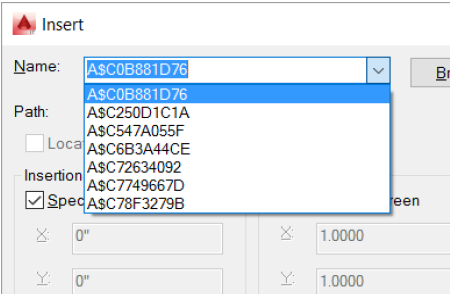

In this example, we will replace the default row number with alphabetic characters. In this area, you may perform SQL coding to generate the values you would like to appear on each #ROW mark. To do this, navigate to Project > Configurations > Project:ģ. Next, go to the tab Mark and select the formula symbol:Ĥ. This will open up the formula manager for the row mark. This can be done by replacing an existing sheet by right-clicking the sheet and going to Title blocks > Replace followed by locating the customized sheet:Ģ. Once the sheet is in your project, we can customize how the values will output. Once the title block has been completed, it can now be used in multiple projects with different customization parameters.ġ. First, add the title block to your project. The results of customization will follow default settings: There is also added flexibility if you need to add multiple numbering columns by toggling Row numbering.ħ. Delete the reference linear dimensions and save the title block template.Ĩ. To test the sheet, open up a project and add the title block sheet to your project. If you are not using a column, keep With columns unchecked. The column of the title block can be calibrated in the same manner. In this case, it would be 1.75+(0.75*12 rows) = 10.75 for the First row position and Height of a row will be set to -0.75 to increment down. If you would like to reverse these values, determine the offset value of the top row. In this case, the values will begin at 1 and vertically increment up. Here, you will enter in your offsets with the referenced dimension marks created: In the side panel, scroll down to locate the row/column title block properties. From the title block origin to the first #ROW mark, create a linear dimension mark:Ħ. Now that we know where our rows will be marked, let’s calibrate the offsets. A simple way to do this is by using Linear Dimension from the drawing tools. In the image, it will be 0.75.Ĥ. Using the same method, we can select the attribute tag #COL from the attribute list and create an array of the tag.ĥ. Next, we will measure the location of your attribute tag to calibrate the title block. We will use this value to calibrate the title block later. You can check these values by looking at the bottom-left status bar or by right-clicking the bottom-right status bar. When prompted, you will select the spacing between each object based on an XY coordinate system. If needed, you can change text properties of the tag by right-clicking #ROW and selecting properties:ģ. Now, using the drawing function Array, we will create copies of this tag. This tag will represent any row values that we will modify in the project settings: Double-click the tag and add it to your project. On the left side panel, open Miscellaneous inside of the attributes list and locate #ROW. To start, we will need to add attribute tags that will express the values. Select the sheet to be modified, right-click and select open:Ģ. For this example, let’s say we need to add a row of numbers as well as columns to define the space within the drawing. For this example we will edit a B-sized sheet. This will open up your title blocks manager. You can access your title blocks by going to Library > Title blocks manager: Title Block Editsġ. First let’s take a look at a default title block. The title block template is designed to have flexibility between projects, and thus, there are two main areas of editing that will take place: The title block template and the project settings.
#Block replace cad 2018 how to#
In this tutorial, I will show you how to customize your title block to have an automated row and column number.

SOLIDWORKS Electrical 2014 | V.1: Title Block Customization – Rows and Columns


 0 kommentar(er)
0 kommentar(er)
